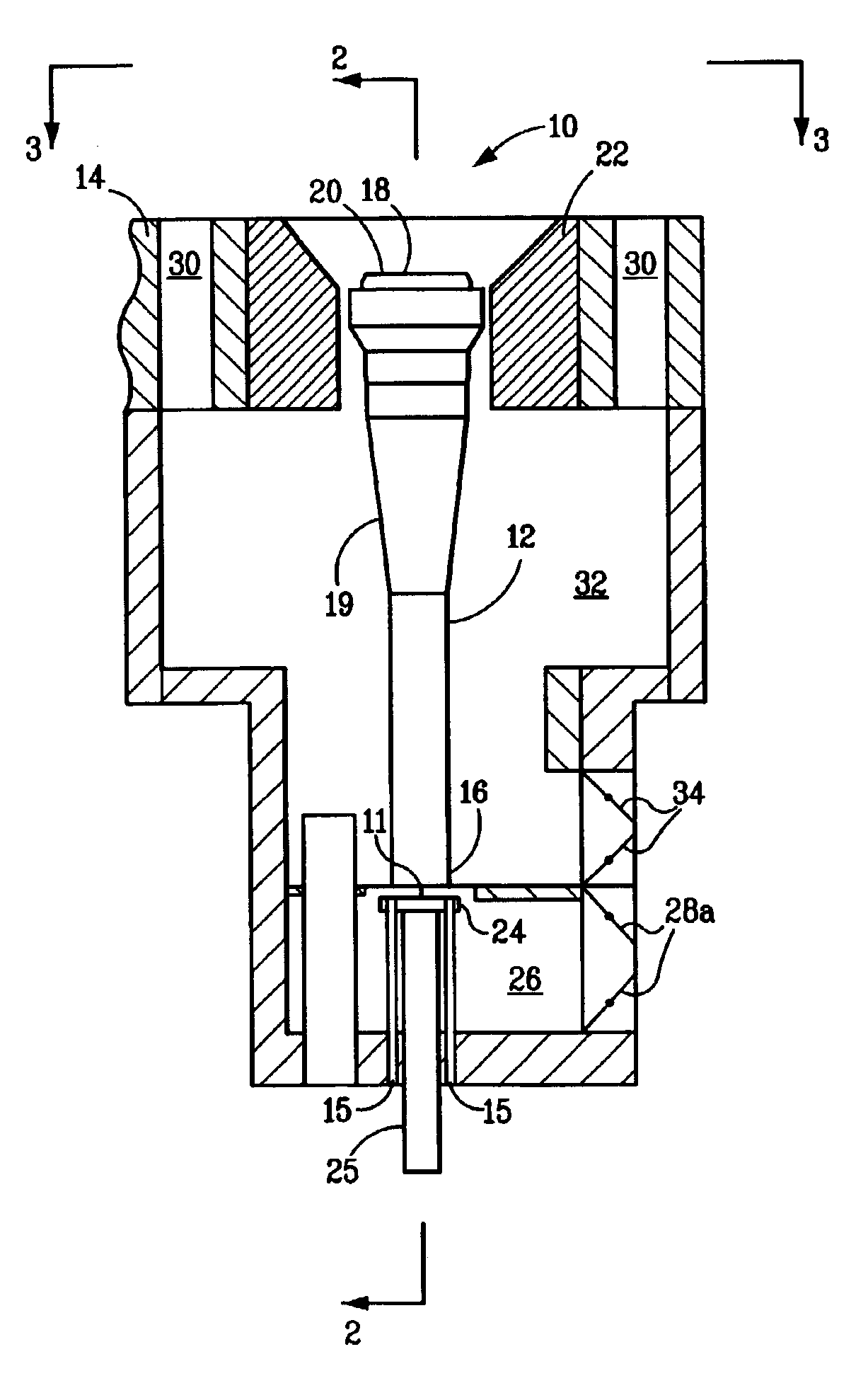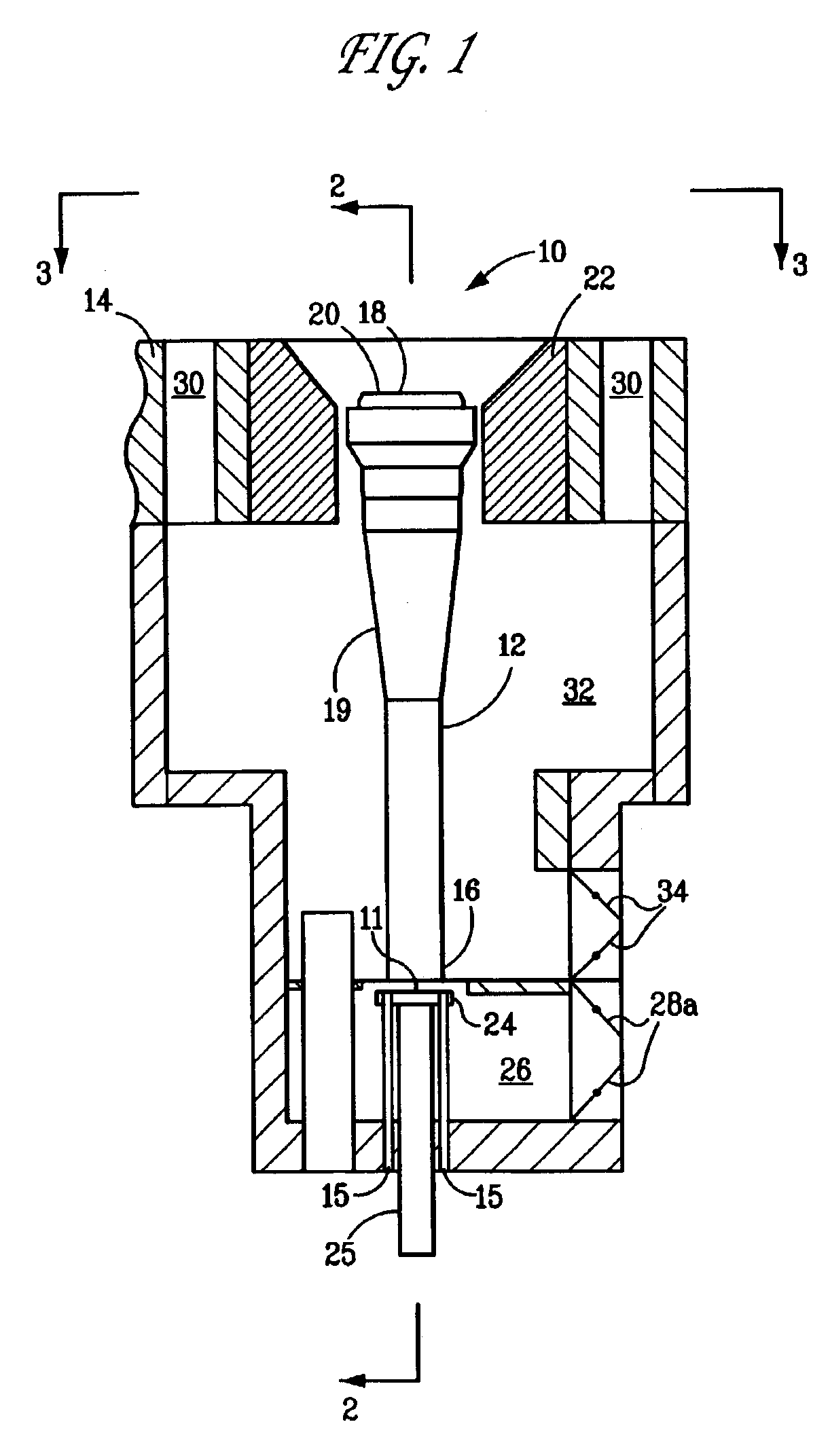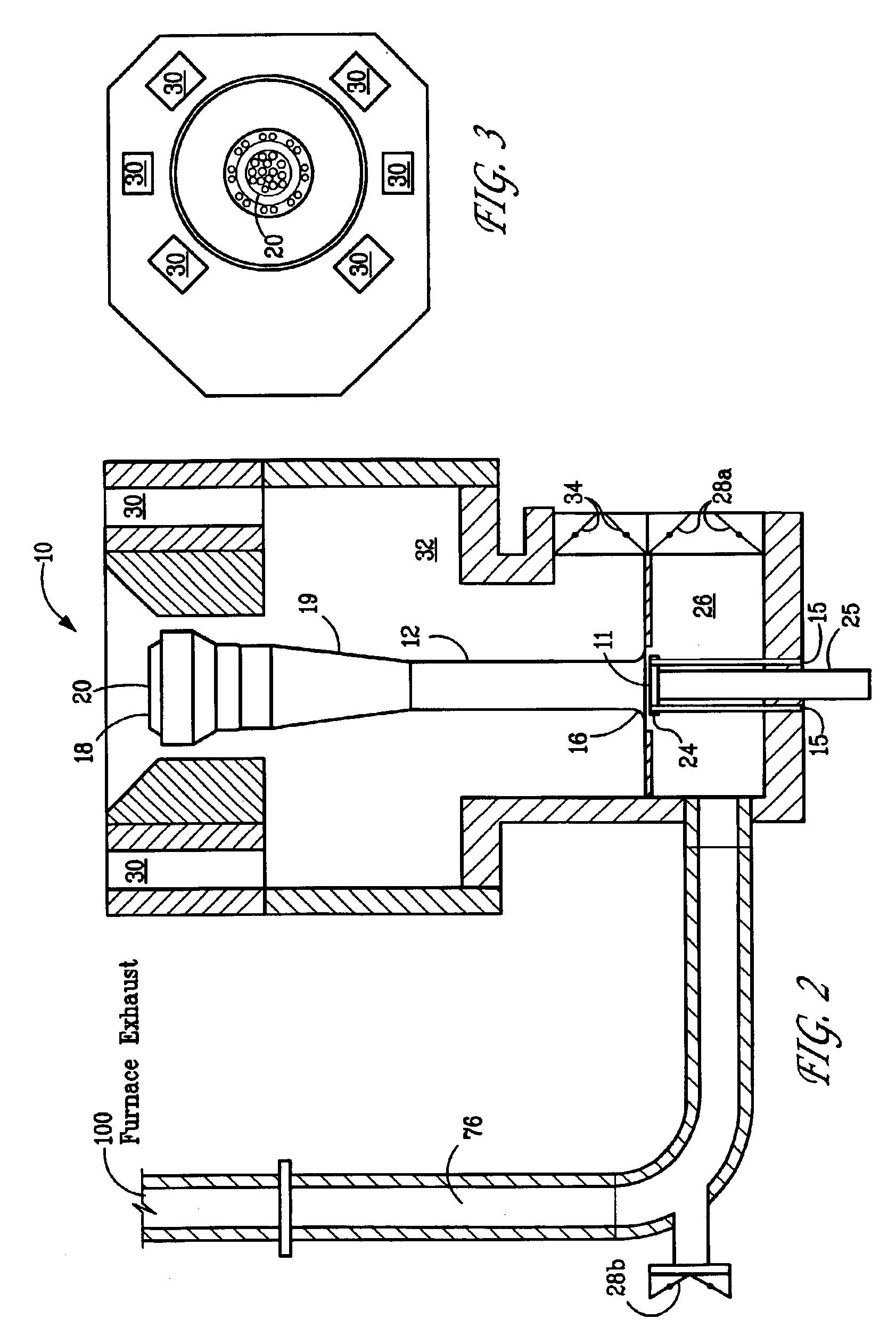Burner system employing flue gas recirculation
- Summary
- Abstract
- Description
- Claims
- Application Information
AI Technical Summary
Benefits of technology
Problems solved by technology
Method used
Image
Examples
Embodiment Construction
Although the present invention is described in terms of a burner for use in connection with a furnace or an industrial furnace, it will be apparent to one of skill in the art that the teachings of the present invention also have applicability to other process components such as, for example, boilers. Thus, the term furnace herein shall be understood to mean furnaces, boilers and other applicable process components.
Referring particularly to FIGS. 1-3, a premix burner 10 includes a freestanding burner tube 12 located in a well in a floor 14 of a furnace. The burner tube 12 includes an upstream end 16, a downstream end 18 and a venturi portion 19. A burner tip 20 is located at the downstream end 18 and is surrounded by an annular tile 22. A fuel orifice 11, which may be located within gas spud 24, is at the top end of a gas fuel riser 25 and is located at the upstream end 16 and introduces fuel gas into the burner tube 12. Fresh or ambient air is introduced into a primary air chamber 2...
PUM
 Login to View More
Login to View More Abstract
Description
Claims
Application Information
 Login to View More
Login to View More - R&D
- Intellectual Property
- Life Sciences
- Materials
- Tech Scout
- Unparalleled Data Quality
- Higher Quality Content
- 60% Fewer Hallucinations
Browse by: Latest US Patents, China's latest patents, Technical Efficacy Thesaurus, Application Domain, Technology Topic, Popular Technical Reports.
© 2025 PatSnap. All rights reserved.Legal|Privacy policy|Modern Slavery Act Transparency Statement|Sitemap|About US| Contact US: help@patsnap.com



